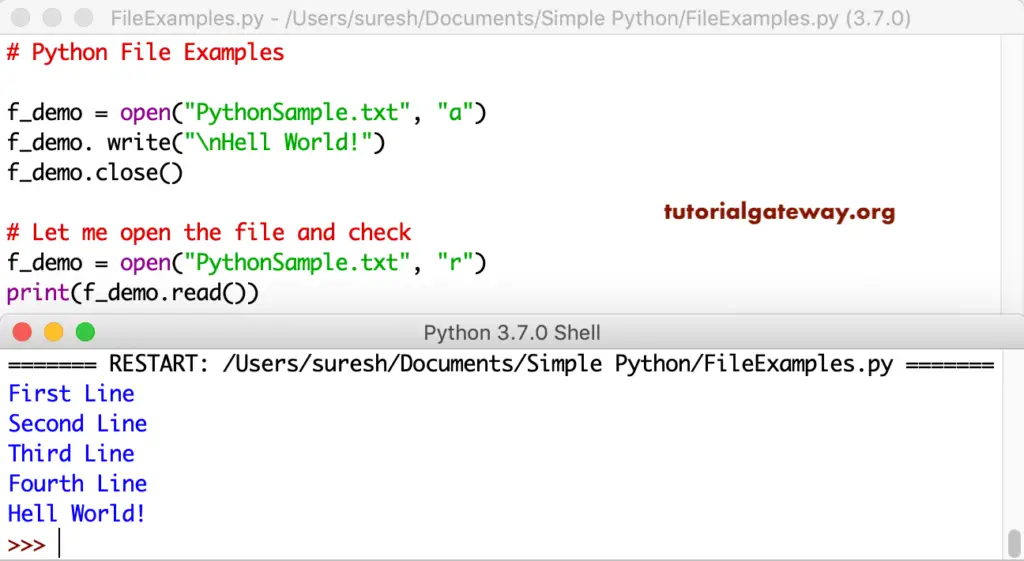

- Python open filr for writing and appending how to#
- Python open filr for writing and appending install#

To open files in append mode we use either ‘a’ mode or ‘a+’ mode. If we do not pass any mode it will by default take ‘r’ mode. The open() function takes two arguments first is the file name and another is the mode in which we want to access the file. As our main concern in this topic is to discuss append data so we use append mode with the open() function. Python file append: As we know to perform any operation in a file first we have to access it.Here open() function comes into use.the open() function is used to open a file in reading or write or append mode. The basic difference between both of them is that when we open a file in write mode then as many as the time we perform write operation our original data will be overwritten with new data but when we access the file in append mode it means we append new data with original data. Python file append: So some may have a sort of confusion about what is the difference between appending and writing to a file. “a+”: This mode is used for both reading and appending.ĭifference between writing and appending in a file.“r+”: This mode is used for both reading and writing.Write mode (‘w’)- This mode is used to write to a file in python.Append mode (‘a’)- This mode is used to append to a file in python.This mode opens a file for reading and gives an error if the file doesn’t exist. Read Mode (‘r’)-This is the default mode.There are some modes in python that we need when we work with python files.
Python open filr for writing and appending how to#
Try using a Python library such as Pandas to work with other file types.Python open file append: In this article, we will discuss the topic of how to append in a python file.īefore we fully understand this topic we have to be clear about some basic abbreviations that we use during file handling in python whether we have to write something to the file or append to the file. You know how to handle files in Python after reading this guide. Writes a of lines to the stream without a line separator. Writes to the file object and returns the written number of characters.Ĭhecks whether the file object allows writing. Resizes the file stream to (or current position if unstated) and returns the size. Ĭhecks if the file object supports random access. Returns a list of lines from the file object, where is the approximate character number.Ĭhanges the pointer position to relative to the. Reads from the object until a newline or end of the file. Returns the file's descriptor if available.įlushes the write buffer.

Separates buffer from text stream and returns the buffer. Below is a table that outlines all available processes and what they do. Python offers various other functions when working with file objects. If the file does not exist, Python throws an error. The read mode in Python opens an existing file for reading, positioning the pointer at the file's start. Omitting the mode defaults to 'rt' for reading text files.īelow is a table describing how each of the modes behave when invoked. The mode must have exactly one create( x)/read( r)/write( w)/append( a) method, at most one +. Use this mode for non-textual files, such as images. Writes to a file and creates the file if it does not exist or overwrites an existing file.Įxclusive creation that fails if the file already exists.Īppends to a file and creates the file if it does not exist or overwrites an existing file.īinary mode. Reads from a file and returns an error if the file does not exist ( default). The table below outlines the different possible options: Mode The mode is an optional parameter that defines the file opening method. If the file location is elsewhere, provide the absolute or relative path.Ģ. The file_name includes the file extension and assumes the file is in the current working directory. The open() function takes two elementary parameters for file handling:ġ. The basic syntax is: file_object = open('file_name', 'mode')

The open() Python method is the primary file handling function.
Python open filr for writing and appending install#
Note: Follow one of our guides to install Python 3 for:


 0 kommentar(er)
0 kommentar(er)
